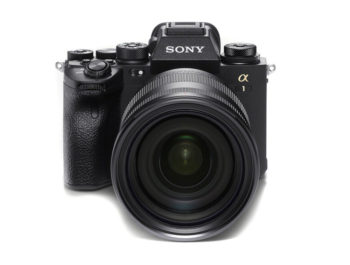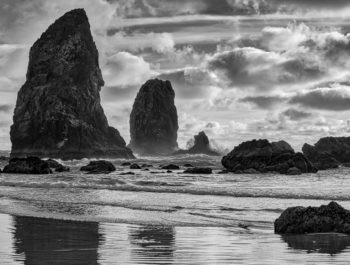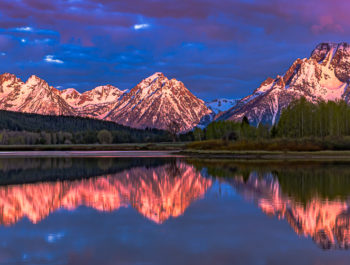Expose To The Right With Sony A1
Why ETTR May Be More Important Than Ever
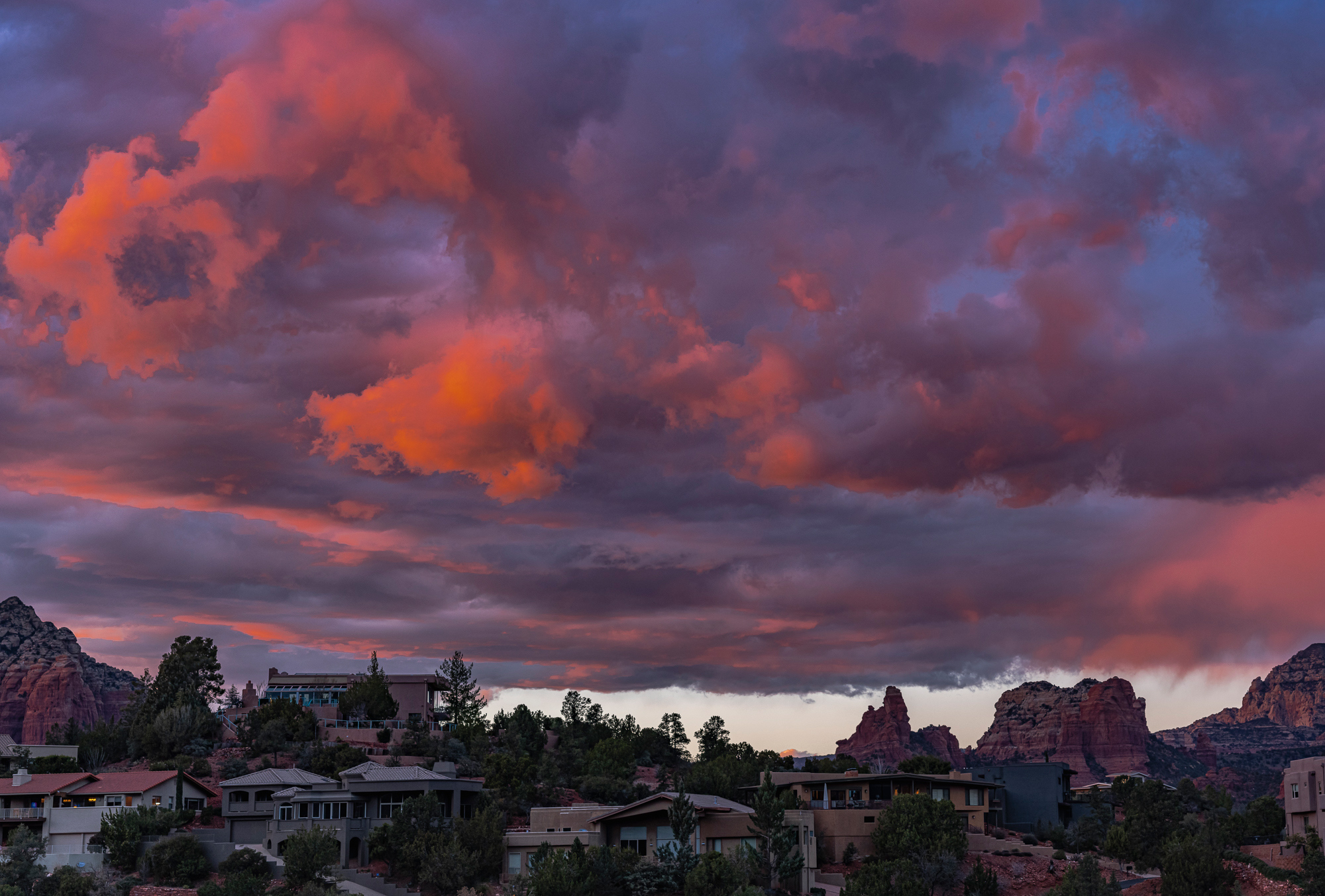
ETTR (Expose To The Right) as a tool to make better photographs has been discussed and promoted ever since digital photography supplanted silver-based photography twenty or so years ago. The name refers to moving the entire tonal distribution of a given exposure, as depicted by a histogram, further to the right in the graph. More simply, it is based on the principle that increasing the exposure beyond the meter reading will proportionately increase the information recorded in every zone from white to black.
The caveat is that this should only be done to the extent that highlights of any significance still retain information in the form of structure or detail to avoid “blown highlights”. Usually, a few small specular white spots can be ignored. However, bright white areas of any significant size should still convey information. While this is a rule that can be ignored for artistic reasons, it has many benefits in maximizing image quality, particularly in the case of landscapes and other nature photography disciplines. In other words, the quality of darker tones should be increased to a point just short of eroding highlight quality at the other end of the tonal range.
This is not an entirely new concept. The basic principle was adopted early in the history of photography, particularly with respect to silver-based film. Kodak technicians spent entire careers graphing silver film density build-up as a function of increasing light intensity, either by increasing exposure time or by opening the diaphragm one f-stop at a time. Every film had different characteristics requiring its own set of charts that also took into consideration how the S-shaped sensitometry curves changed with variations in exposure and development times.
Ansel Adams went one step further. Though his zone system was based upon sensitometry curves, he segmented the changing film density levels into ten “zones”, from pure black (Zone 0), to pure white (Zone 9). Each zone had twice as much exposure as the lower numbered zone immediately before it. Then, to create consistency, Adams identified key landscape components with specific zones, such as a clear North sky rendered as Zone 5 and later in his career as a Zone 4.
However, color photography is more complex because it must accurately portray color wavelengths as well as light intensity for each wavelength. Color film did remarkably well, considering that it was silver-based and relied upon light-sensitive dyes to recreate colors. However, analog light recording media had many limitations. When direct digital recording of wavelengths and intensities of tiny clusters of light waves became feasible, the handwriting was on the wall. Not only were the results more consistent and accurate, but simple ways to optimize color and resolution became possible.
This is when ETTR became a logical and valuable technique. A major impetus for formulating this rule is to minimize one of the major drawbacks in digital technology: the production of noise in low light zones. While film graininess resembles digital noise, it results from using larger, more light-sensitive silver halide grains in faster films. Consequently, these larger grains become more noticeable.
Digital noise occurs in darker zones when low signal to noise ratios resulting from low-intensity light lie close to the recording threshold, and some of it is randomly recorded as a zero, or black. Increasing the sensitivity of the sensor can improve recording performance, providing that heat buildup that promotes noise can be alleviated as has recently been demonstrated by new Sony technology.
Nevertheless, noise will always be present to some degree, so ETTR which adds light to the darker zones is valuable for that purpose. But it turns out that there is another advantage that has not received much attention. More light in every zone yields more detail including the more accurate distinction between very small color and tonal transitions that regularly occur in Nature. An experienced Nature observer with good eyesight and strong observational ability can see this fine rich detail. So can high-quality high-resolution sensors when coupled with lenses that are highly corrected for Longitudinal Chromatic Aberration (LoCA). Photographers who prioritize capturing these fine subtleties refer to this image characteristic as micro-contrast.
Though I have frequently written about equipment and techniques that can capture this effect, I didn’t connect it with ETTR until I started to experiment with my Sony A1 to find optimal exposure settings for landscapes under various lighting conditions. (More about this later in the article.)
My immediate objective for running trials was to create images with more crisp and clear dark zones, and of course little or no noise. Recently, I noticed a dramatic lighting phenomenon on one of Sedona’s red rock formations that only occurs in December, because of the Sun’s strong southern declination occurring a week before and after the Winter Solstice. During this interval, the sun starts to crest the Mogollon Rim 40 minutes after sunrise from my location in Sedona. A short time after that it completely lights up this formation while the surrounding terrain remains in deep shadow. I decided to use this subject to find the ETTR setting that would maximize image quality in both highlights and shadows.
To do this I hiked to an opposing ridge and waited for the sun to appear. Once the formation lit up, I made a series of exposures with a Zeiss Loxia 85mm f2.4 lens set at f5.6 with varying shutter speeds to yield exposure compensation values ranging from -1.0 to +2.3 EV at 1/3 stop intervals. Because the Sony A1 has a dynamic range exceeding 15 stops, I could have taken a wider sampling. However, my experience has been that the sweet spot would fall within my chosen range.
Once home, I edited one image and synchronized the settings of the other images with the first one to avoid introducing extraneous factors, other than adjusting for different exposure levels. The exposure range for the best images didn’t surprise me. But the results were better than anticipated. One EV of underexposure created noise in the shadows as expected. More than 2.0 EV of overexposure was too contrasty, also as expected. The sweet spot in the range was 0.67 to 1.00 EV of overexposure, but overexposure up to 1.67 EV still looked good. Overall, image quality was better than I expected as well.
Following is the image taken at 1.0 stops of additional exposure.
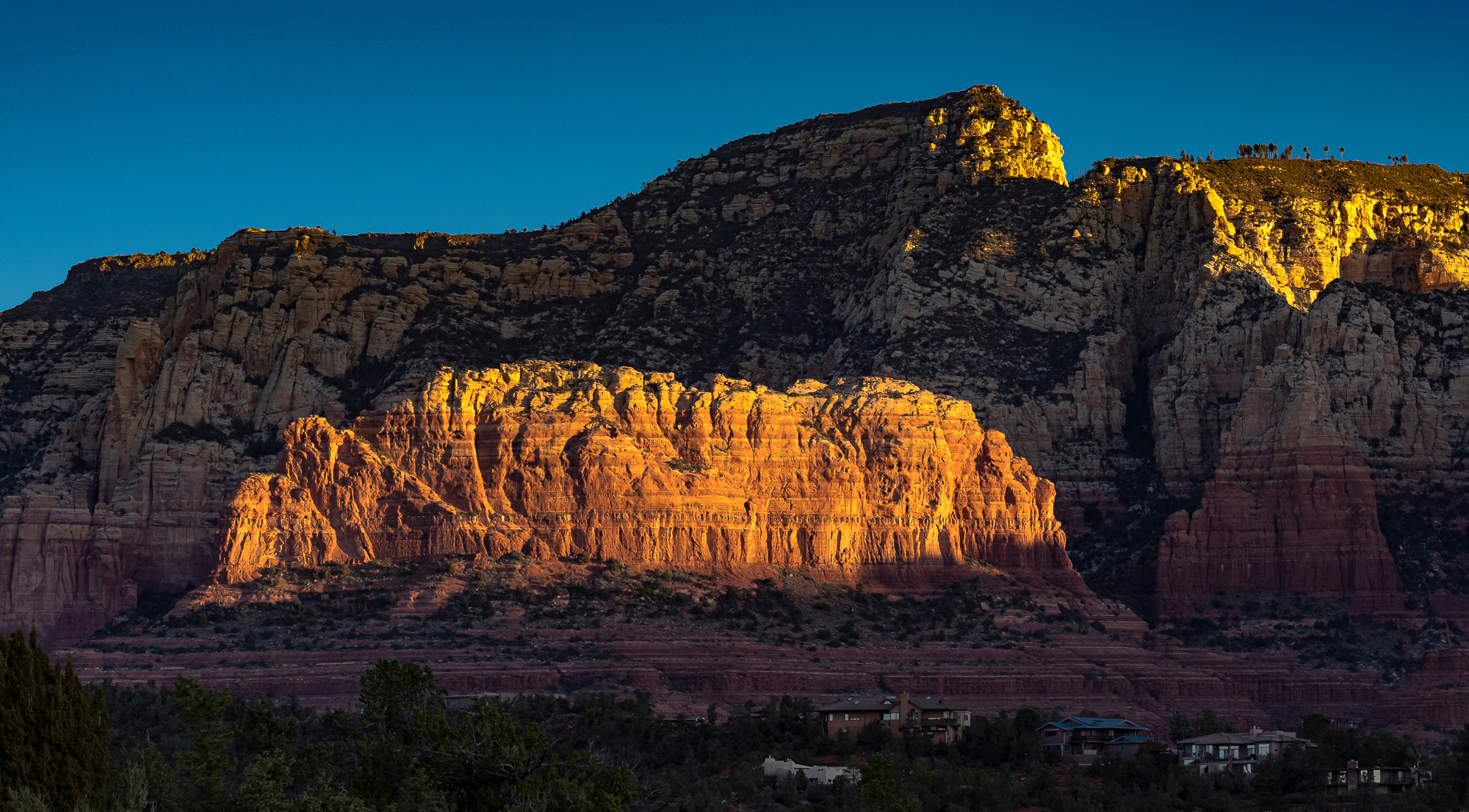
Thereafter, I left my camera’s exposure compensation set on +1.0 EV. And a second early-morning image opportunity arose that clearly shows the advantages of ETTR in high contrast lighting conditions. The following image was taken shortly after sunrise when a snowstorm had cleared out leaving only a single cloud that nestled in the space between Wilson Mountain and a swath of red rock formations. The early light gave the cloud a bright yellow cast, while the snow-dusted red rocks remained in shade. The shadow detail is excellent, which was only made possible by over-exposing by one full stop. The dramatic lighting almost makes this scene look like a smoldering volcano.
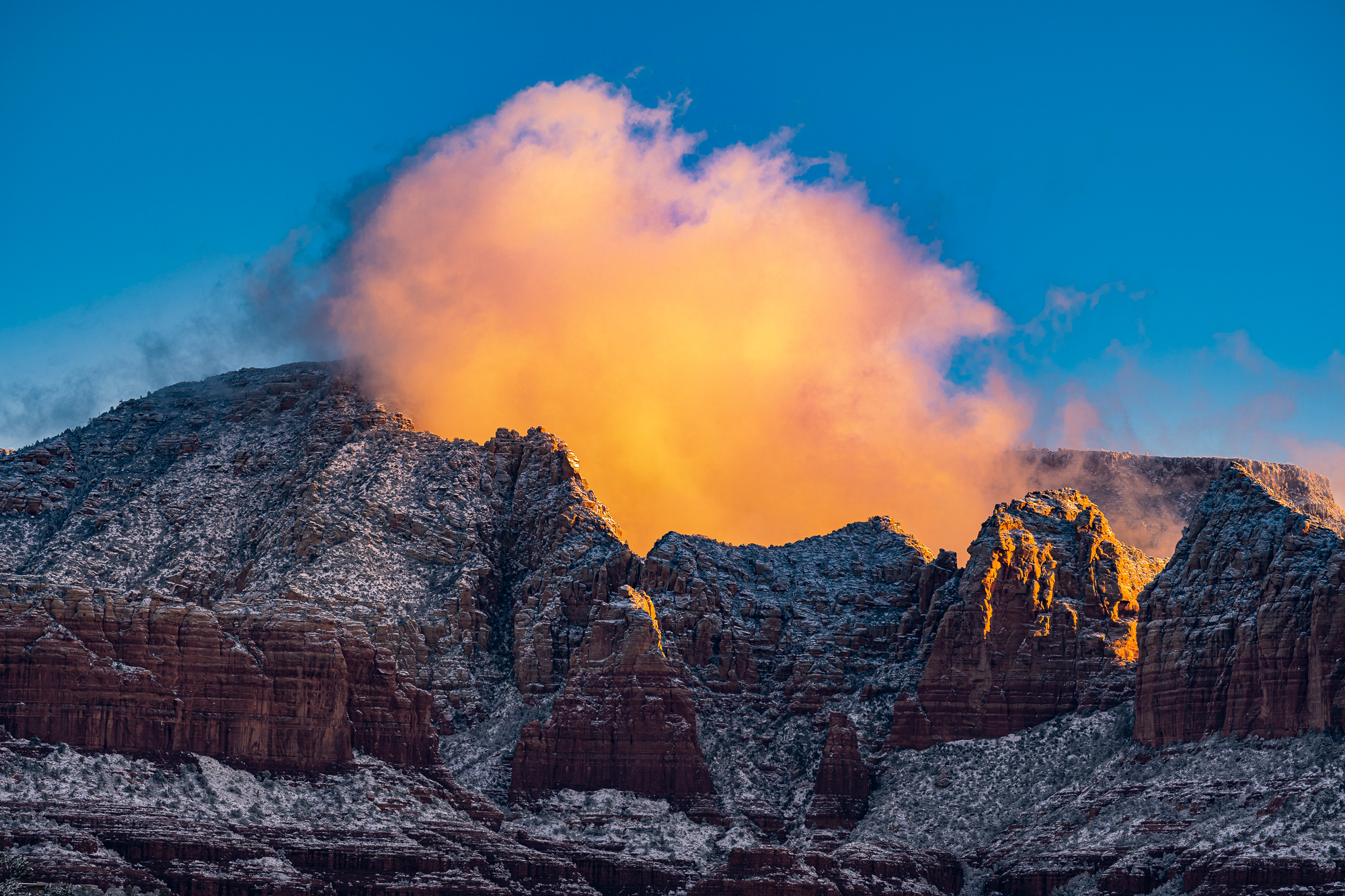
I had two additional opportunities to test ETTR on the Alpha 1 with different lighting and found that image quality was also improved in those cases. The full stop of added exposure worked well for a mid-day sunny scene. The same +1.0 exp comp worked beautifully for a 5:50 PM sunset which was shot at ISO 1600 without a trace of noise.
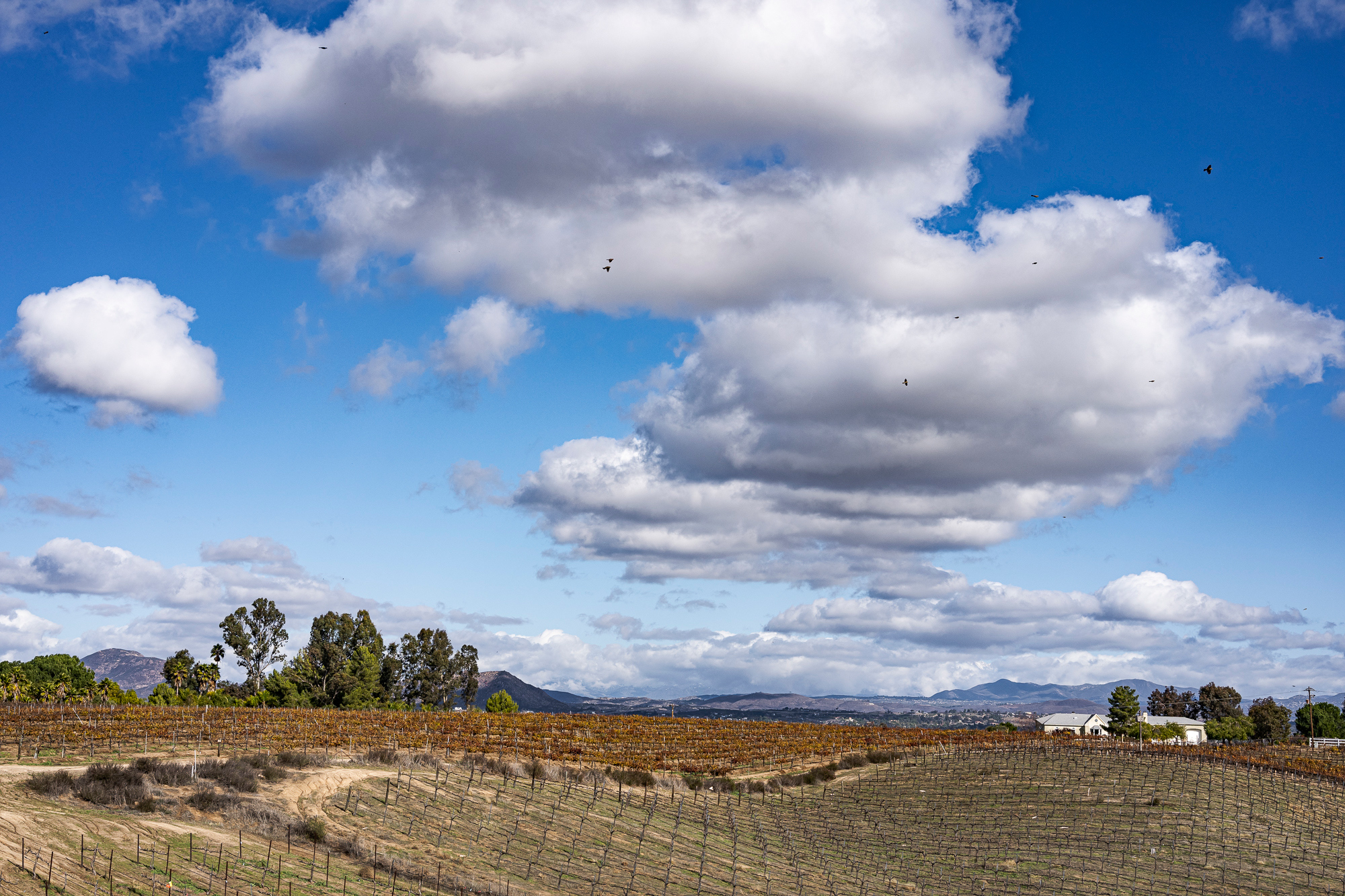

So, ETTR is effective in taking full advantage of the Sony A1 in high contrast ranges often encountered in outdoor scenes, and almost certainly when the Sun is in images taken with lenses with high flare resistance like the Sony 14mm f1.8 GM.
It is also a given that similar benefits accrue using ETTR when prevailing light is more diffuse with a low dynamic range, though I haven’t yet made any test runs under those conditions. Also, the few ETTR exposures that I made seemed to produce higher overall IQ than non-ETTR exposures, and in the mid-tones as well.
So, I was curious about “overexposed” images that I had taken in the past, including those made with other cameras. That led to reviewing metadata for past images to find ones that I had deliberately overexposed. There weren’t that many, as I only played with ETTR on occasion, and rarely over-exposed images unintentionally. I was surprised, though that I found some underexposures that certainly would have been better had I been paying attention.
The biggest surprise was that those overexposed images were the same ones I remembered as requiring very little editing. They quickly displayed richness and balance from the start which I had attributed to optimum lighting conditions rather than to deliberate overexposure. Worth noting is that these images were not confined to A1 production. They included photographs made from the following cameras:
- Sony A7r M4
- Sony A7r M3
- Sony A7r M2
- Sony A7r
- Sigma SD Quattro H
- Sigma DP3 Merrill
- Pentax 645 D
- Nikon D3s
- Canon 1DS Mark 3
While most of these were older technology, they still had excellent sensors and good dynamic range. In all cases, the lenses were highly corrected and had the ability to render fine detail as well as accurate color. The older equipment consistently demonstrated the ability to take advantage of the increased information contained in each of the zones resulting from moderate overexposure and with less noise. Micro-contrast is good in each case, though the Sony A1 with Zeiss Loxia and Voigtlander APO lenses demonstrate the highest capacity to capture nuances in fine color detail, particularly with optimal ETTR exposure. These are fine distinctions, and in the months ahead, I will be focusing more on ETTR captures with my current equipment to produce better examples.
Older ETTR Images
The following ETTR images taken by me from 2010 to the present date are presented for the reader’s interest.
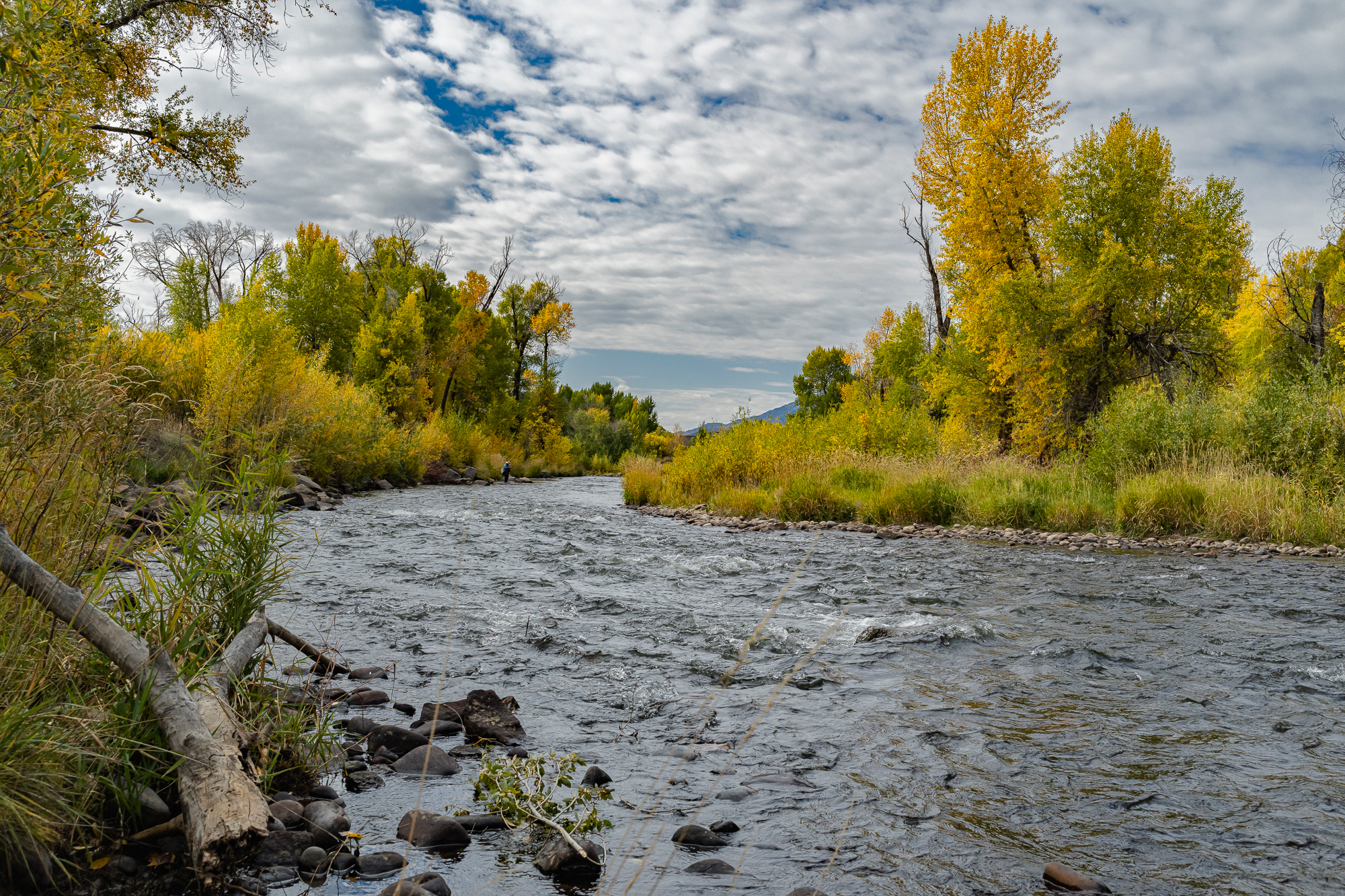
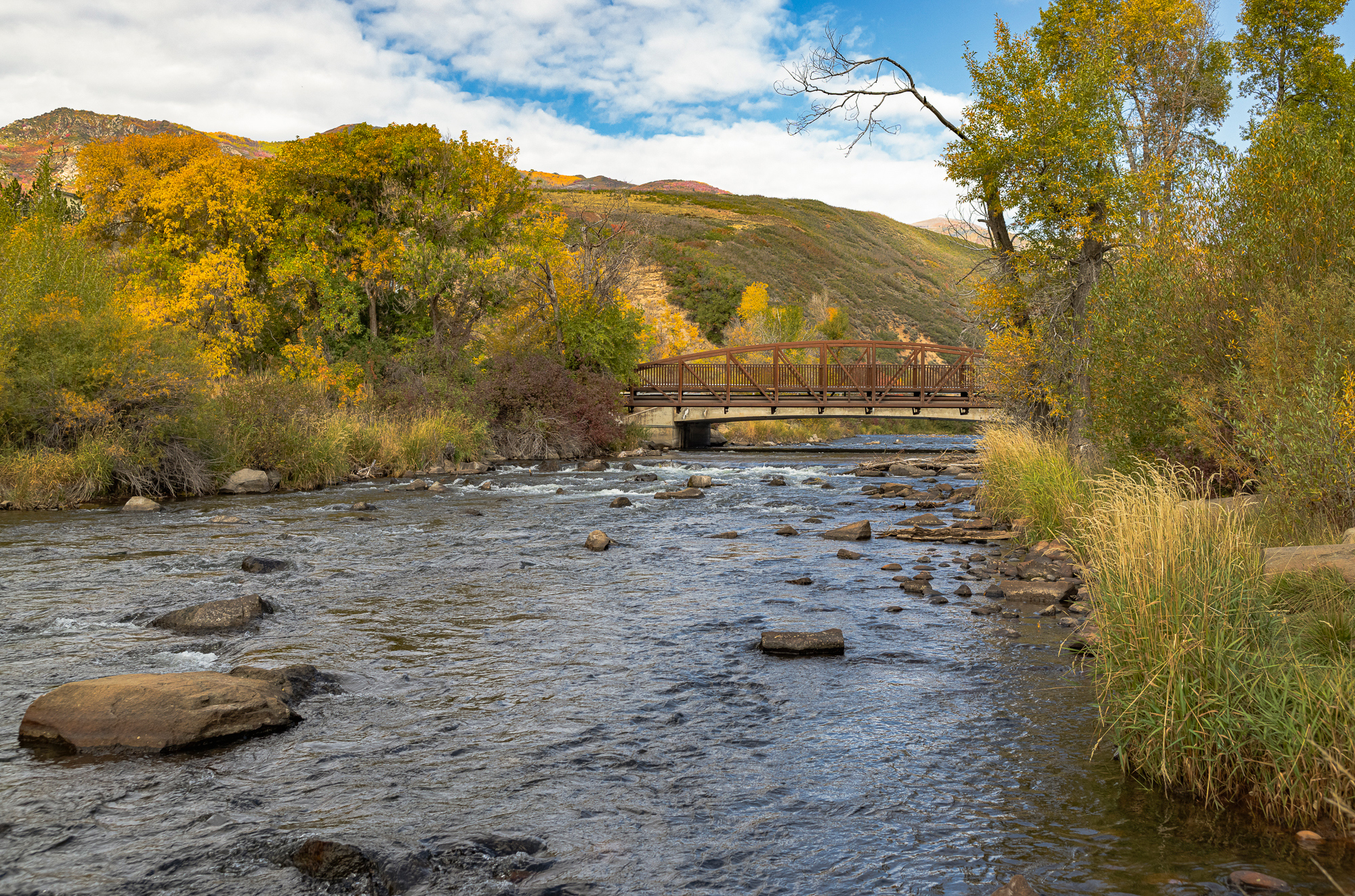

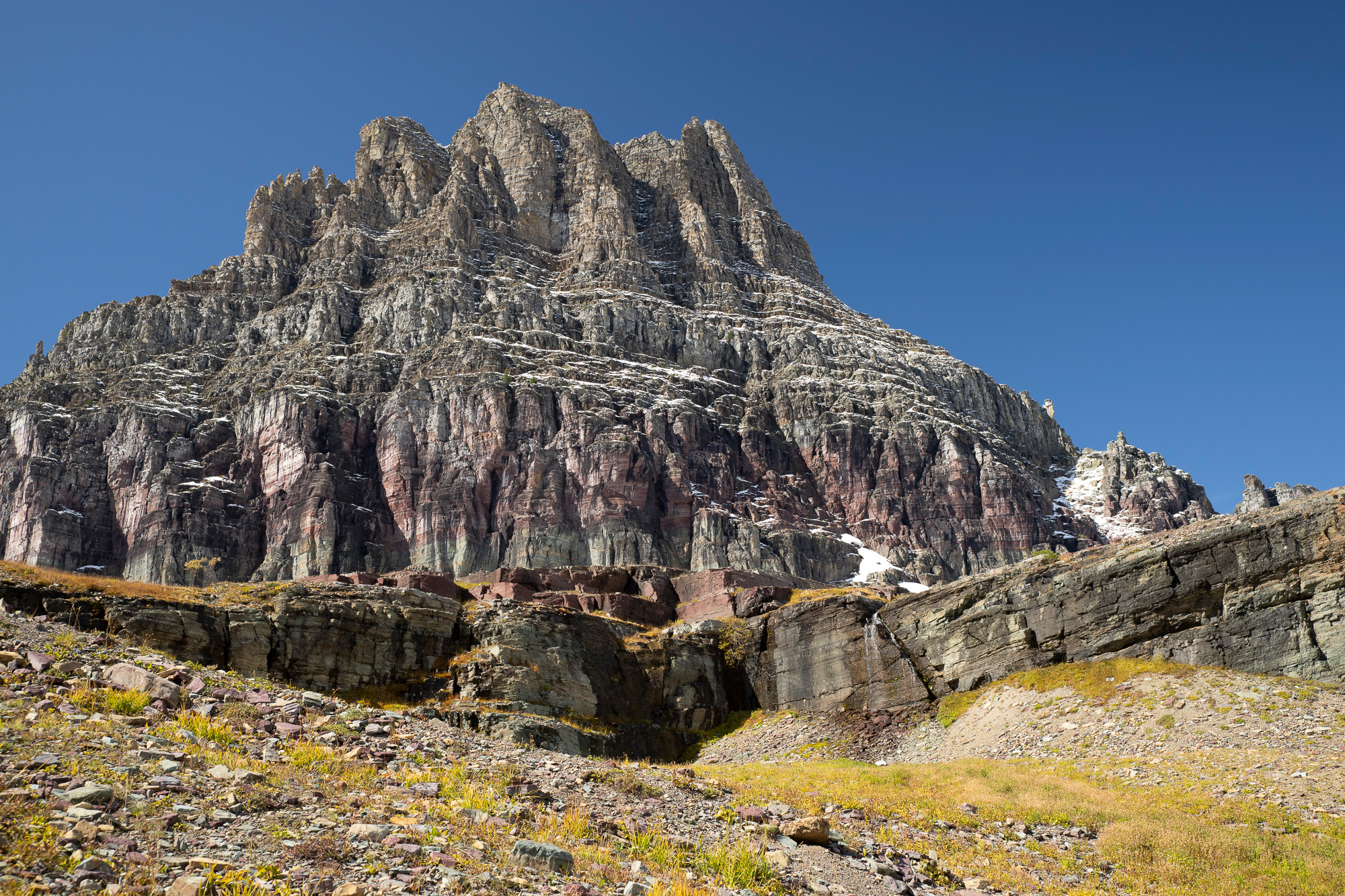
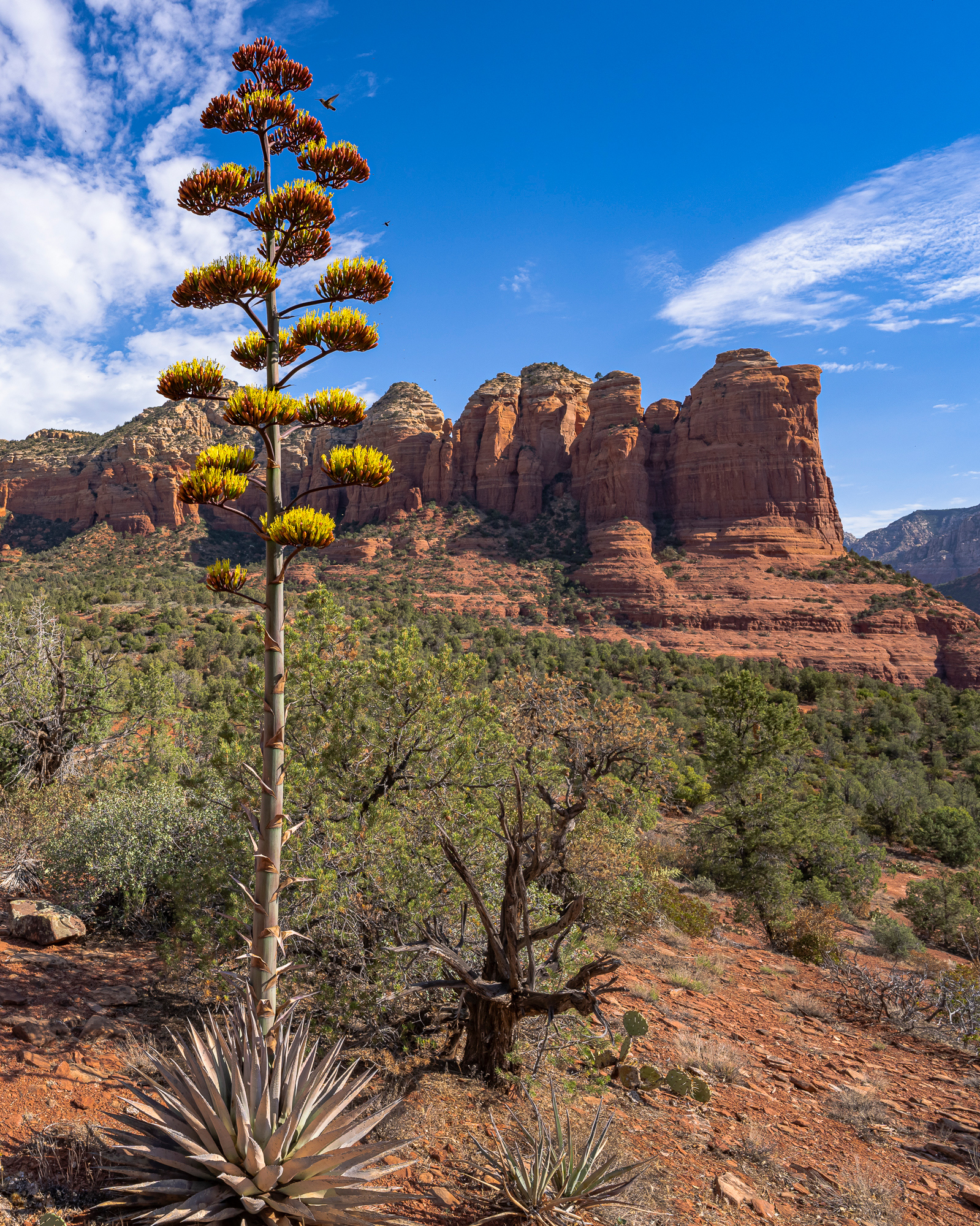
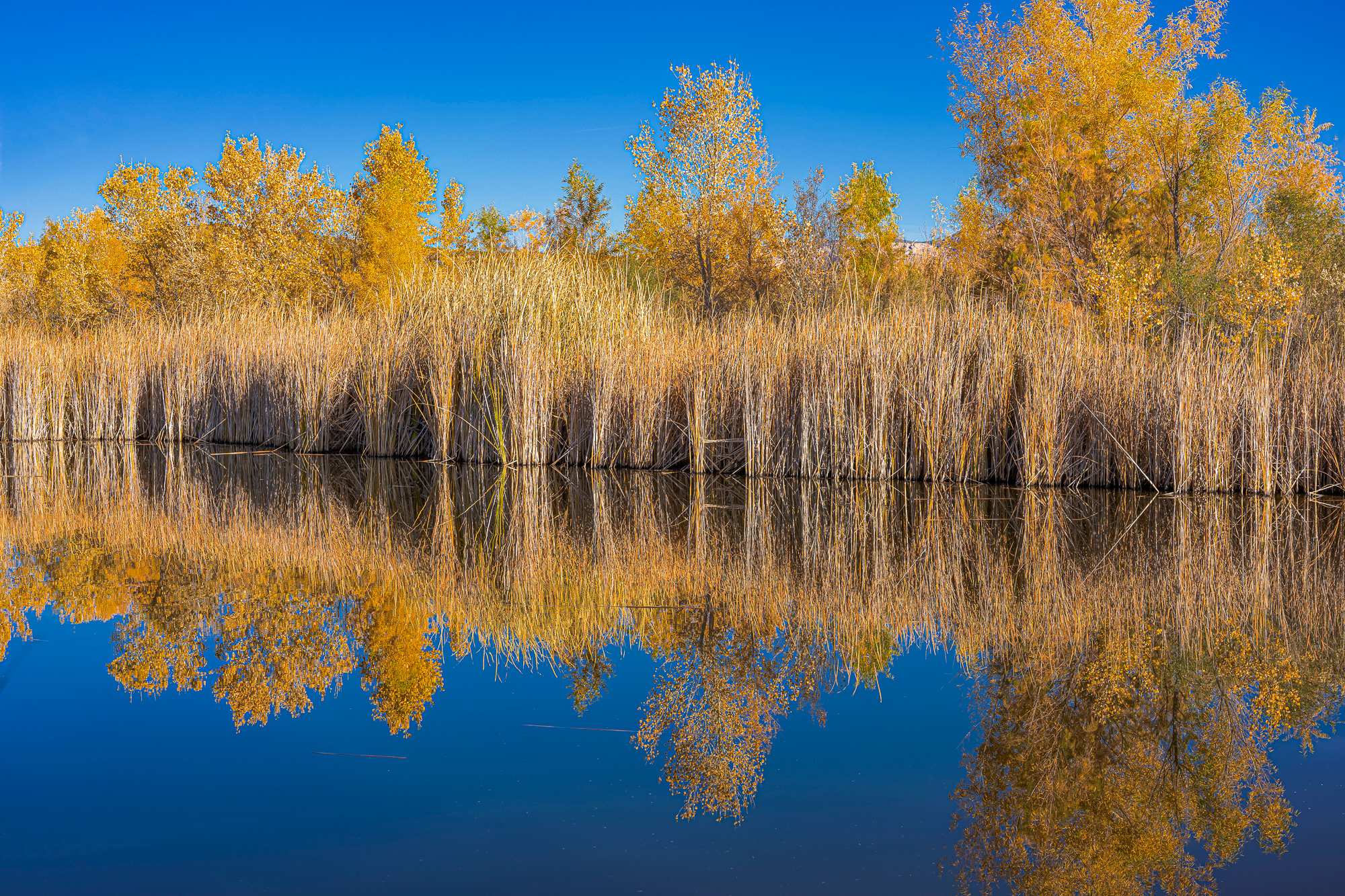
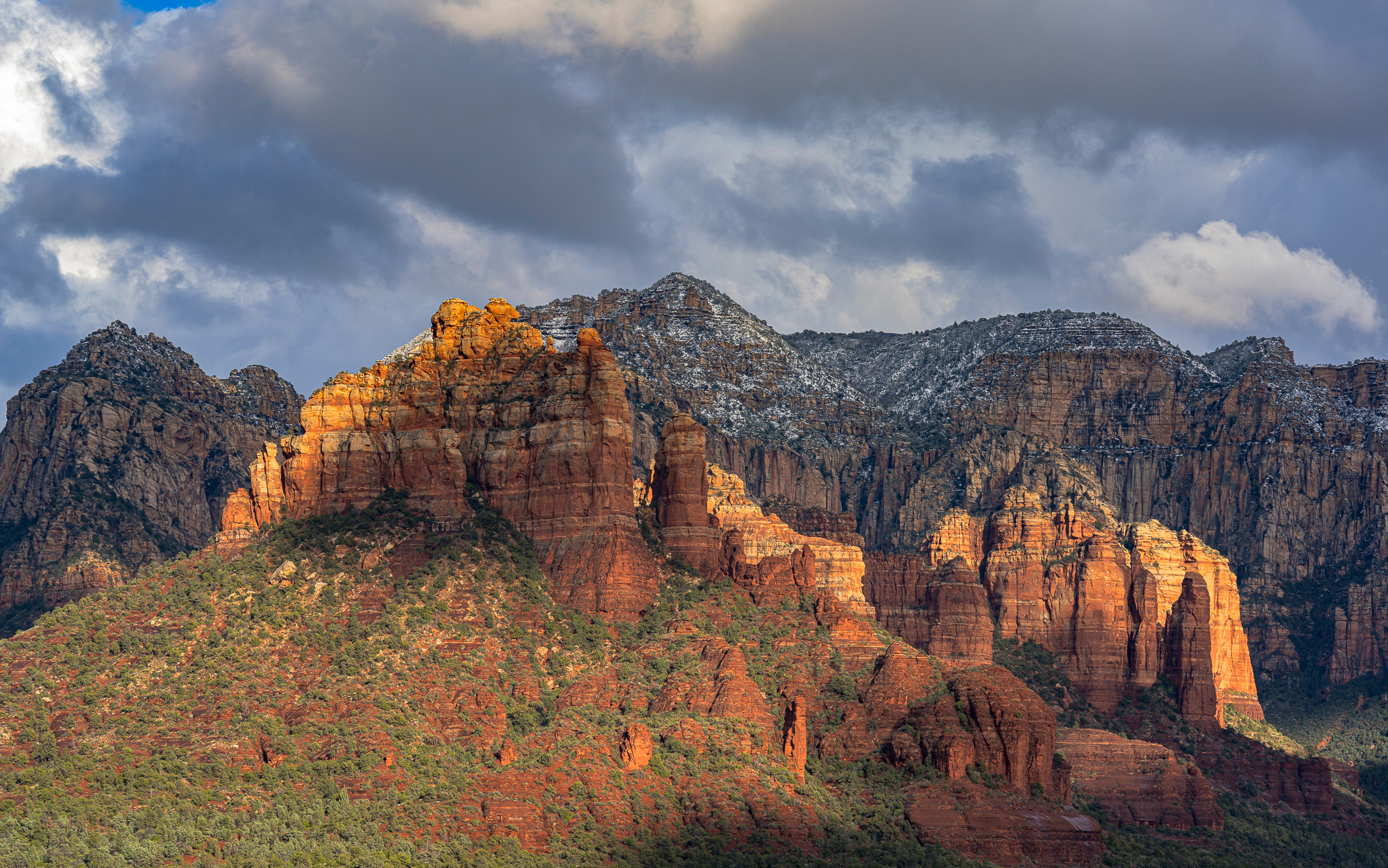
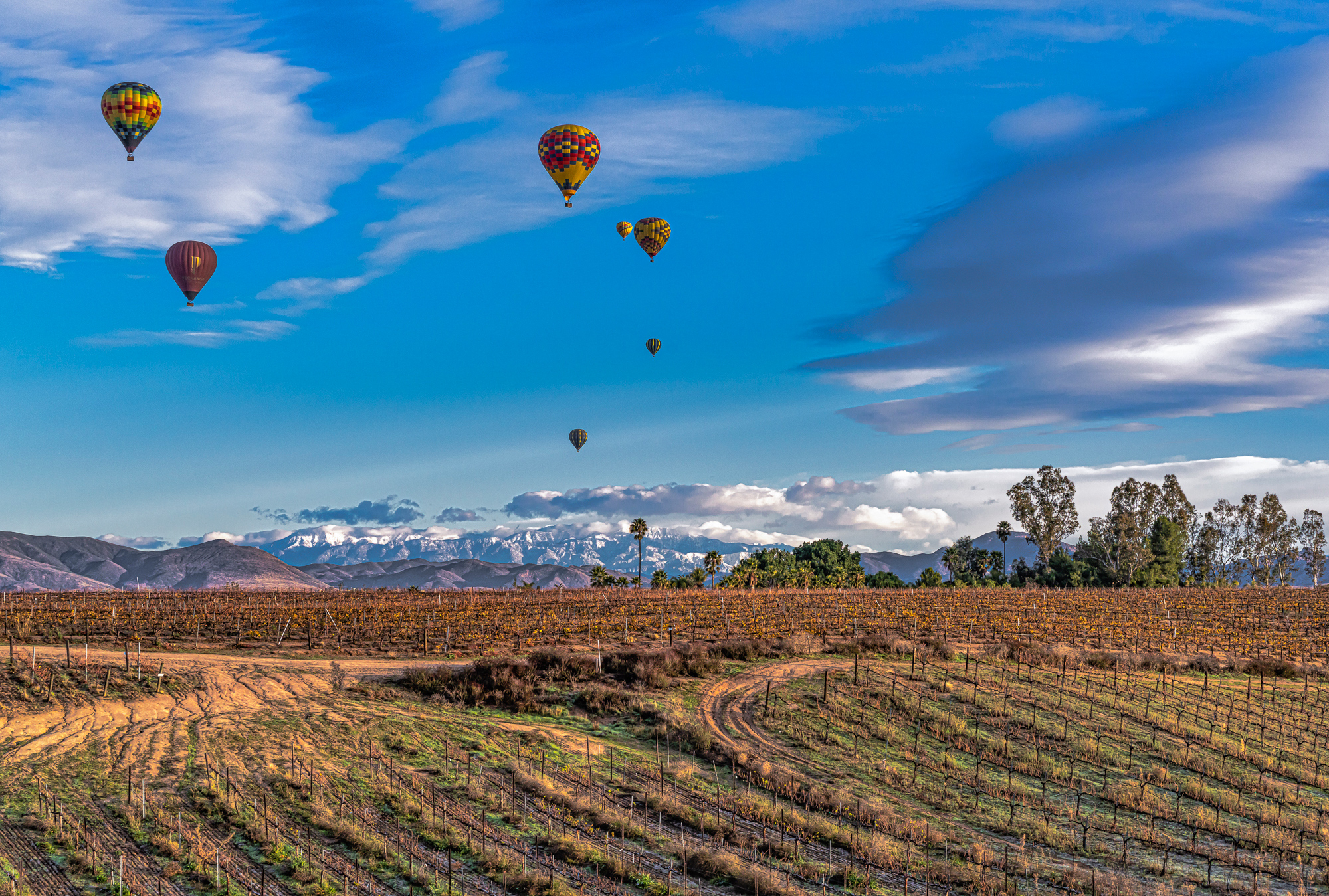
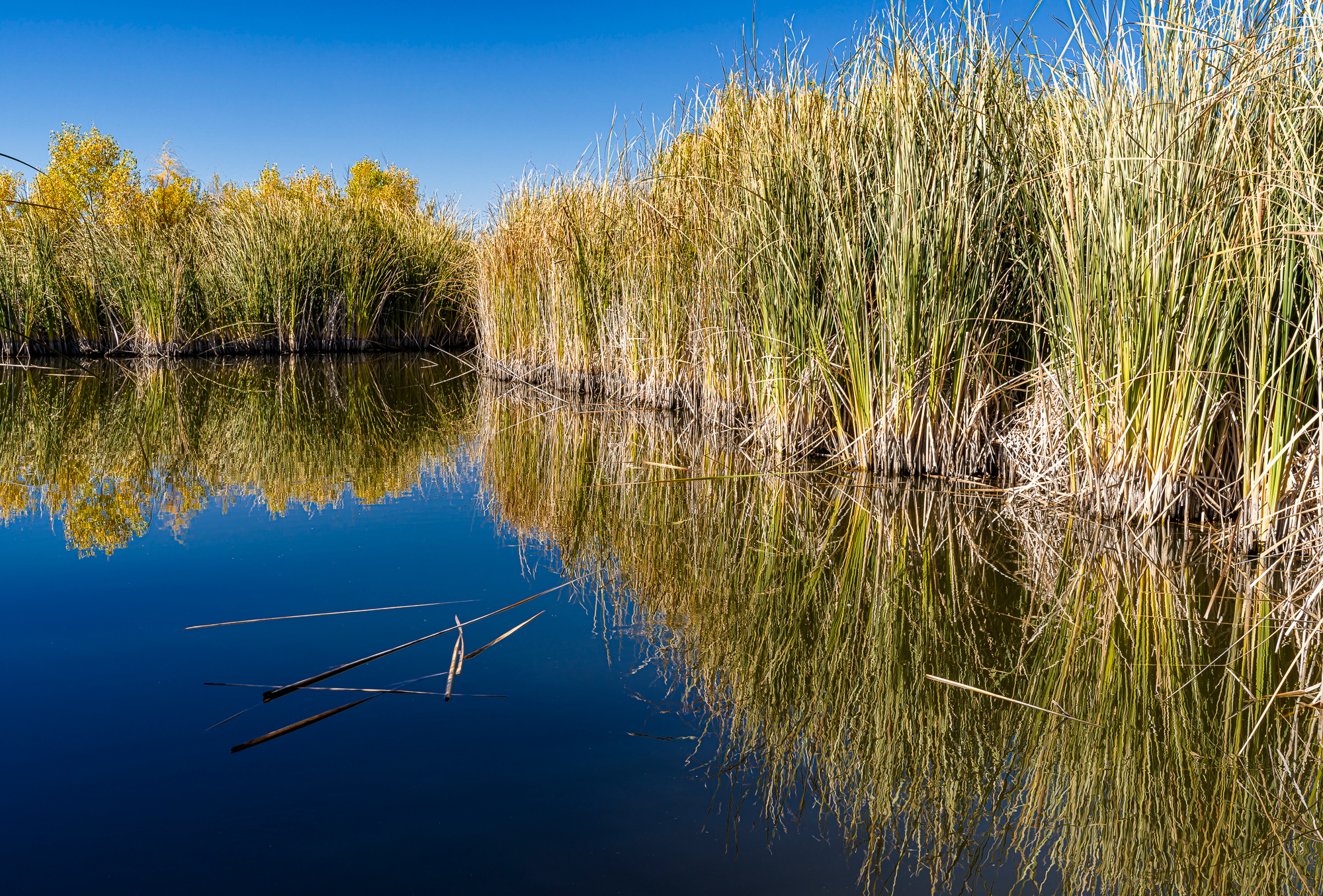
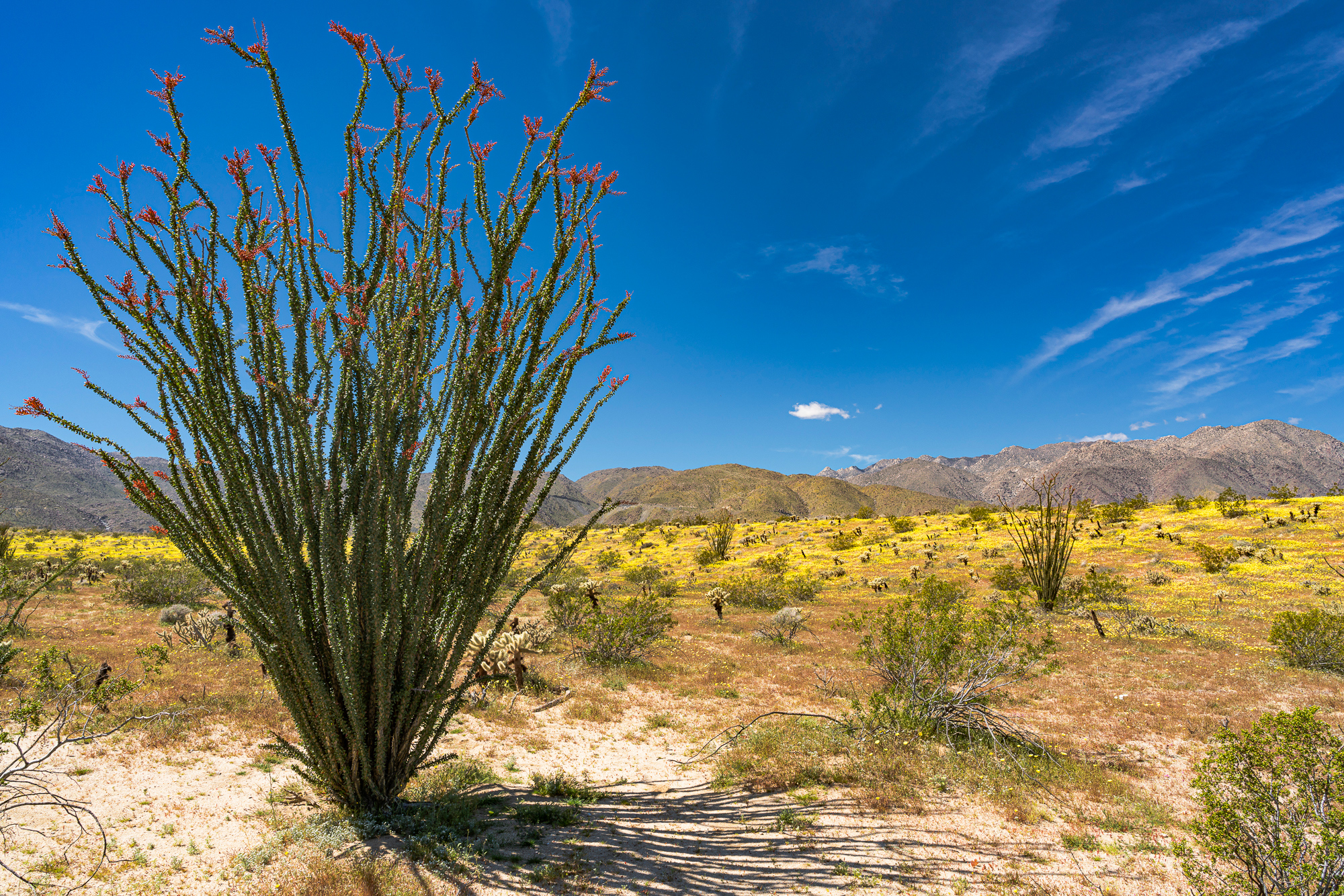
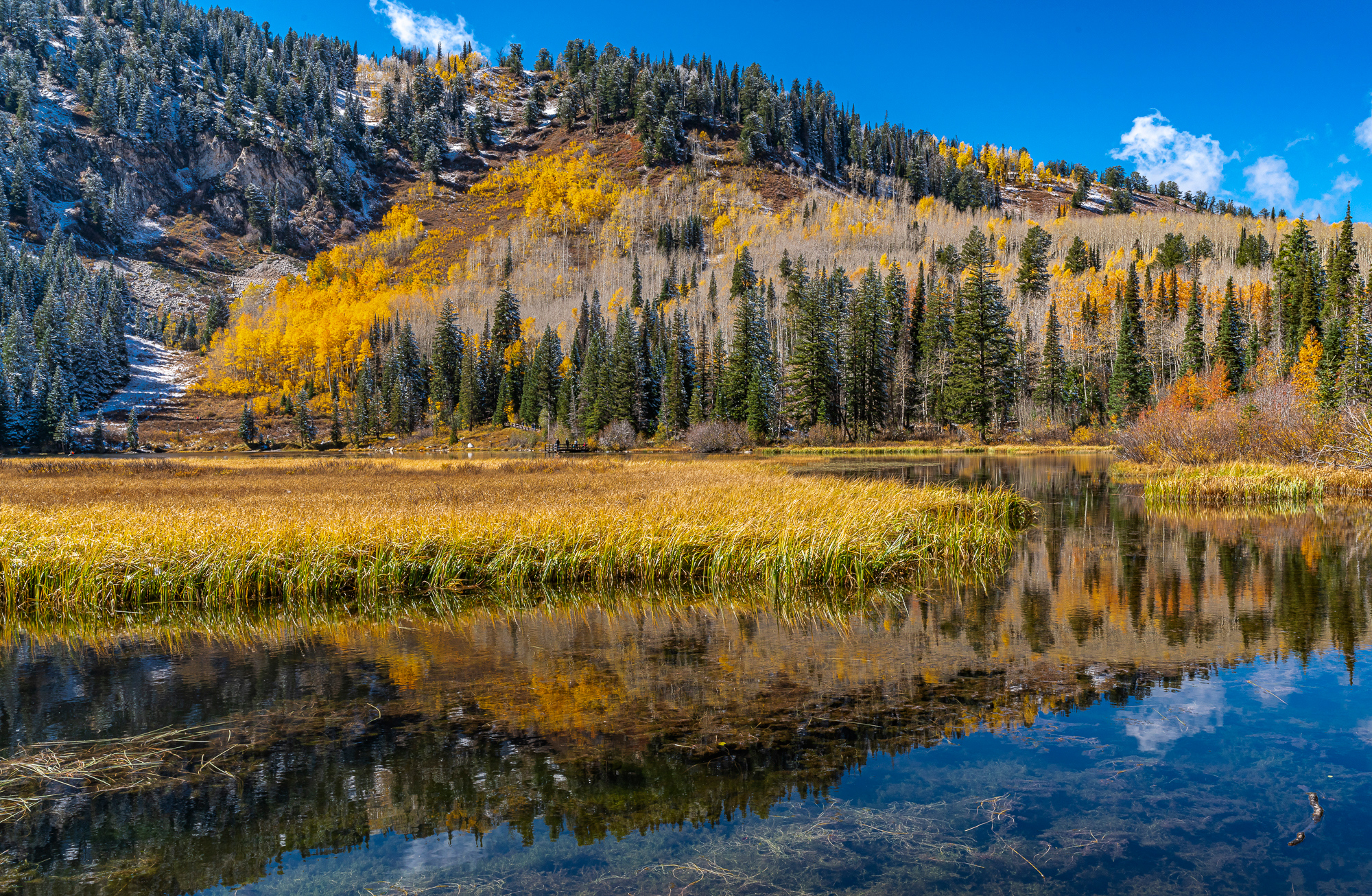
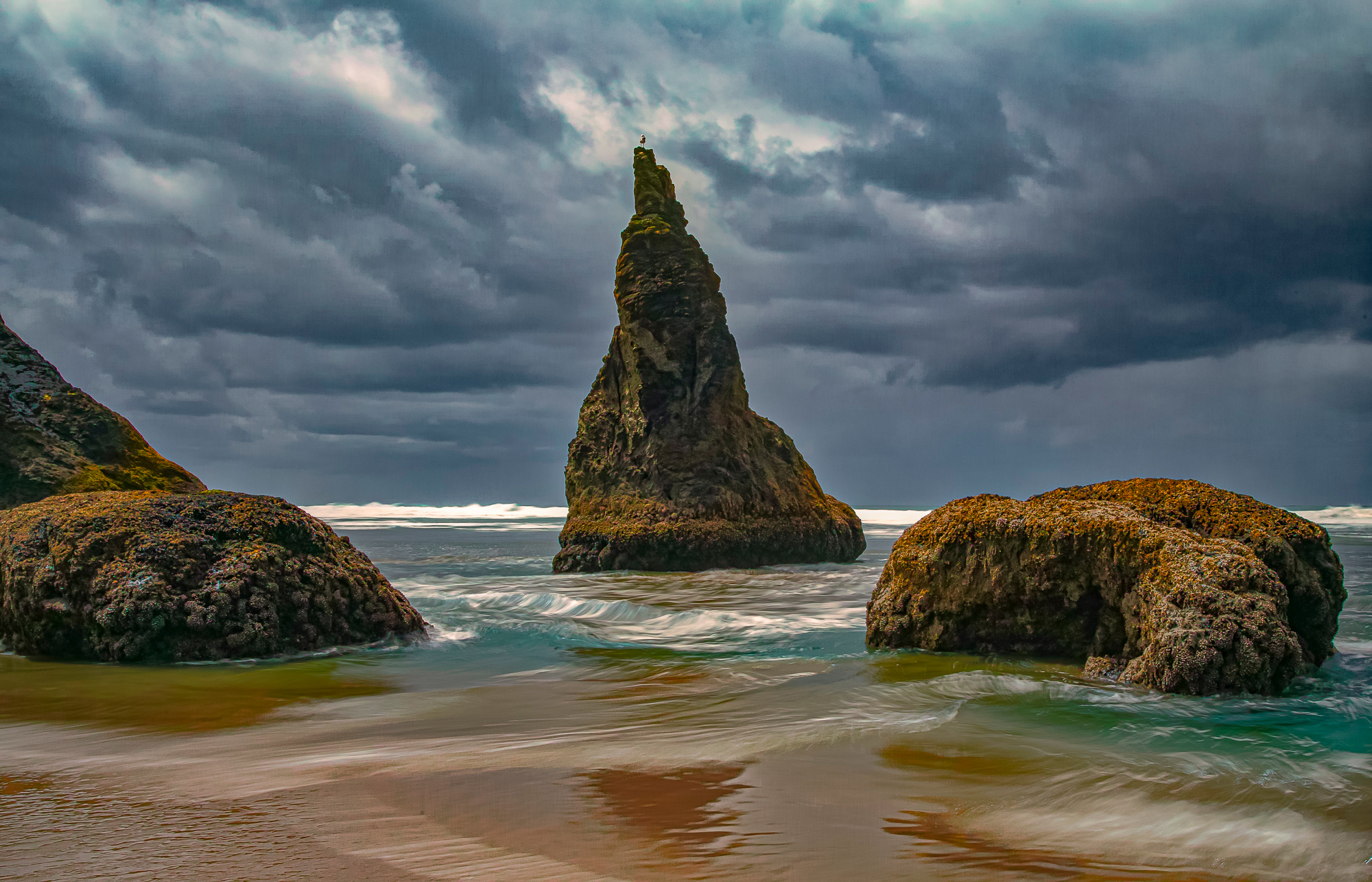
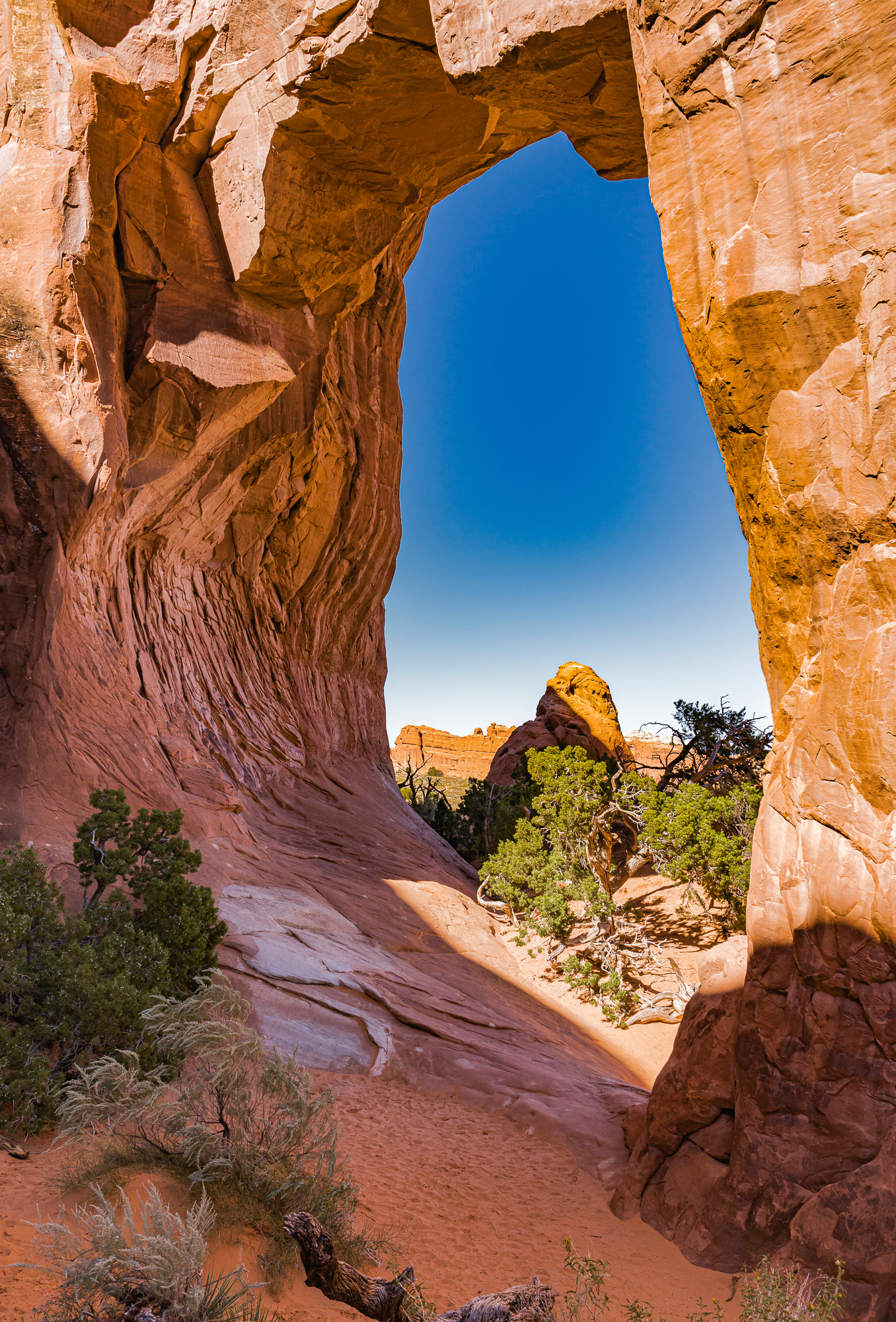
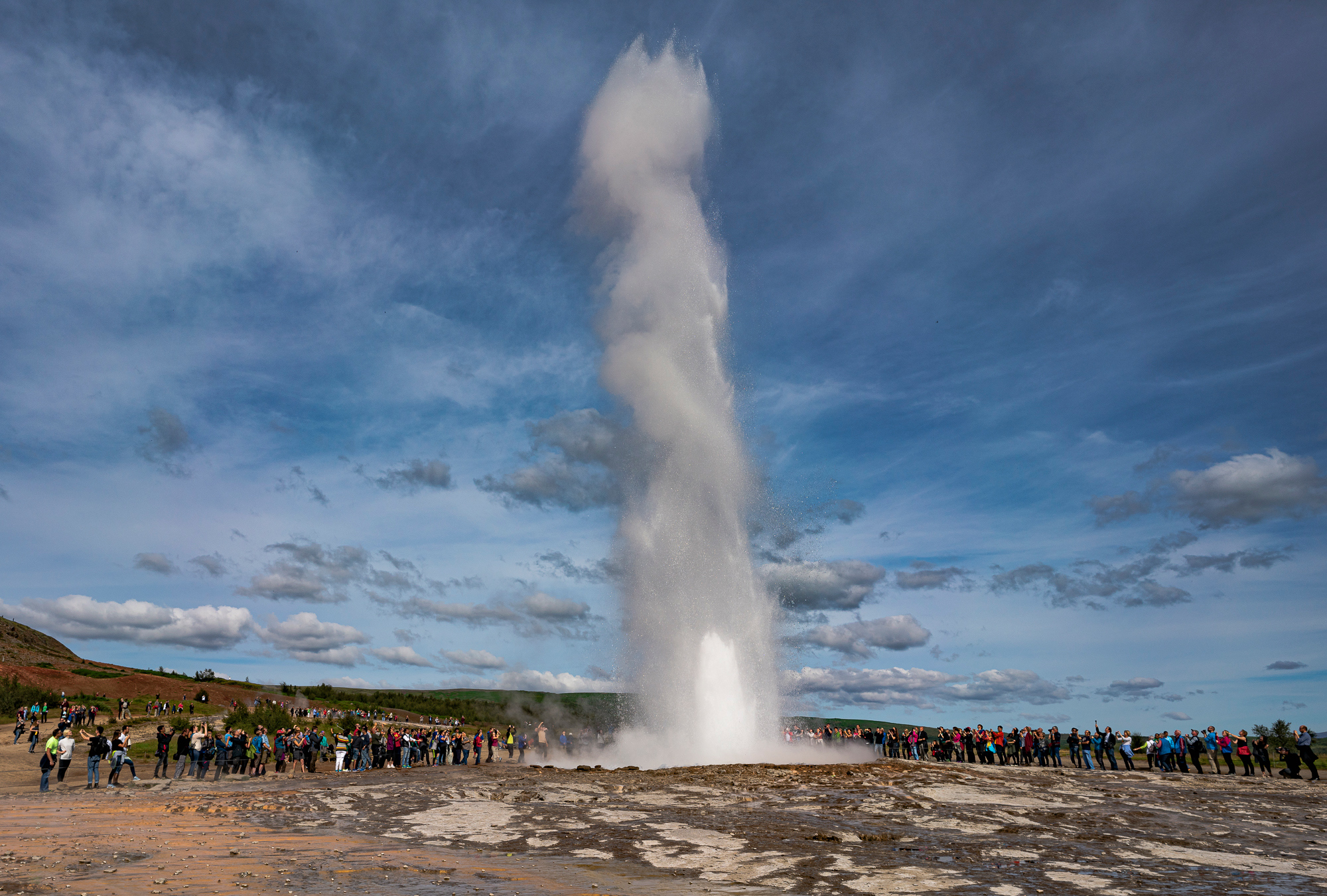
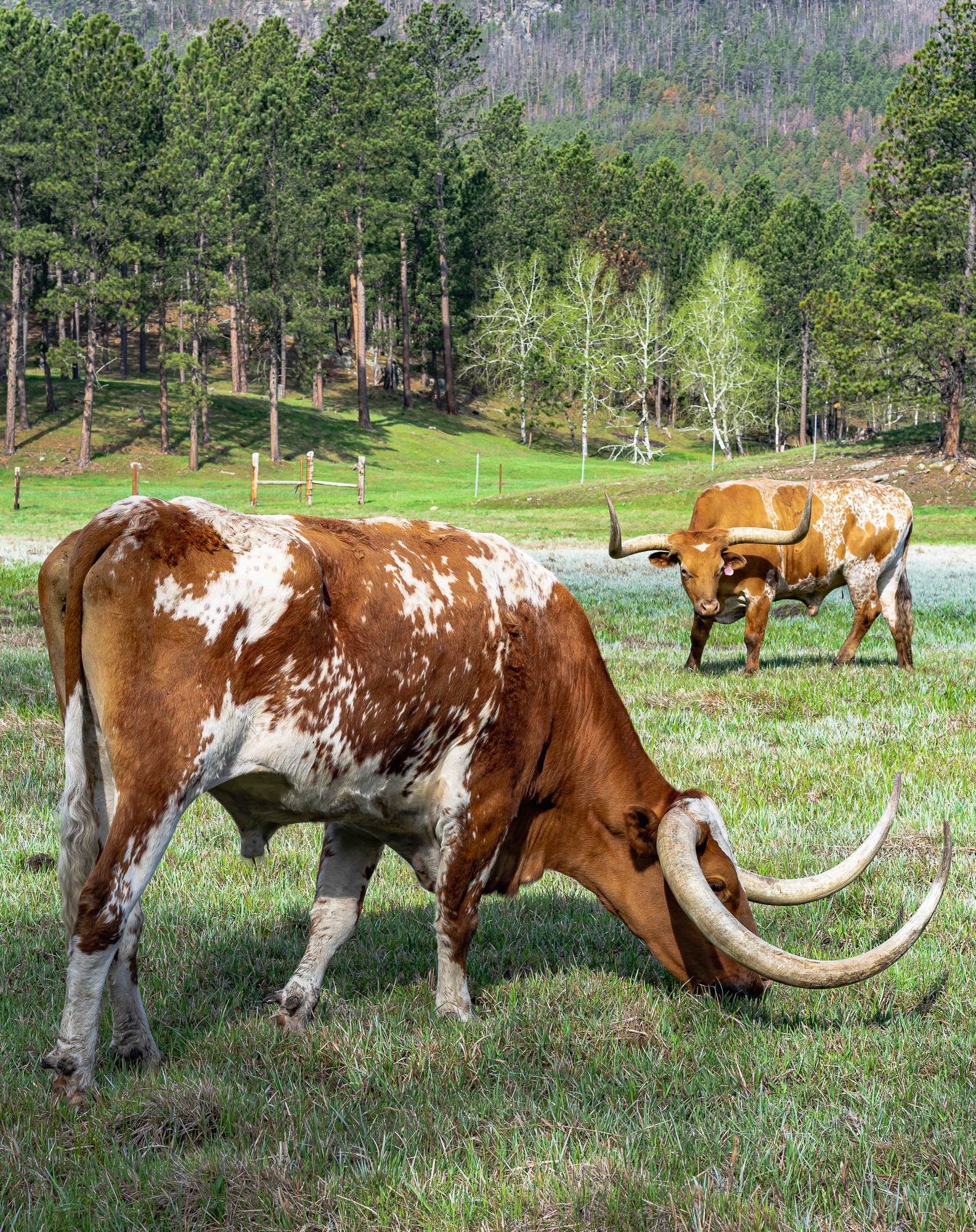
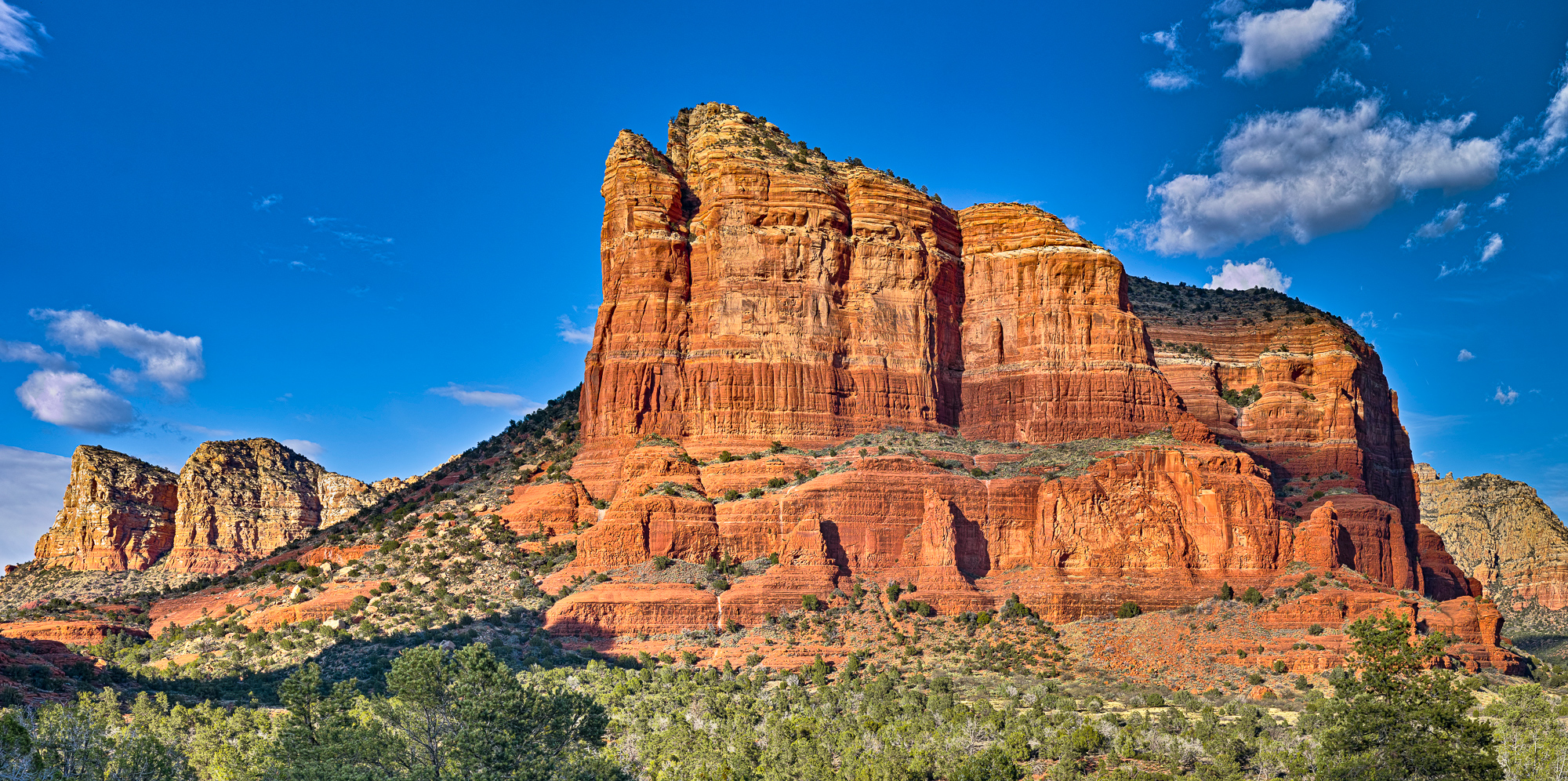
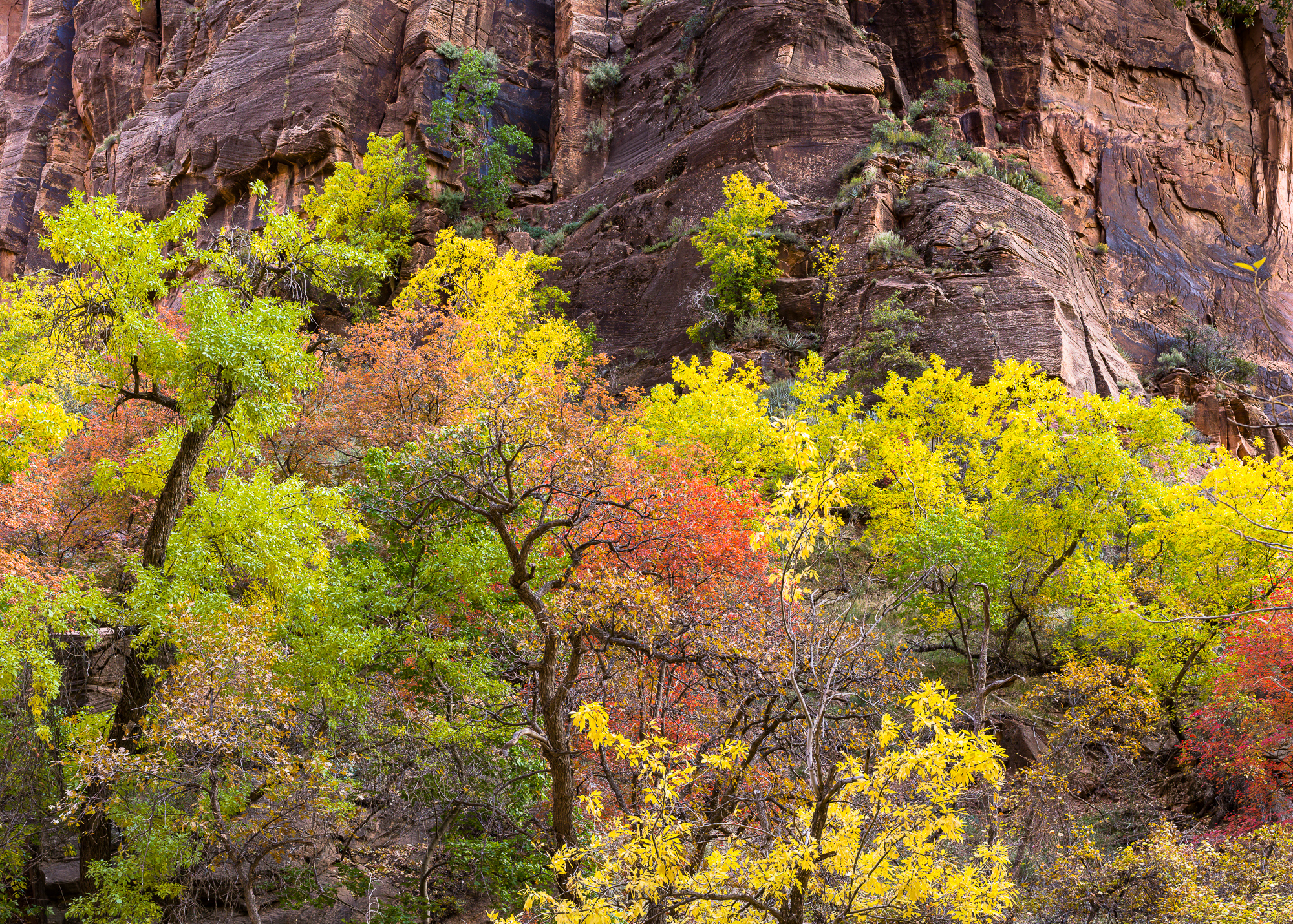
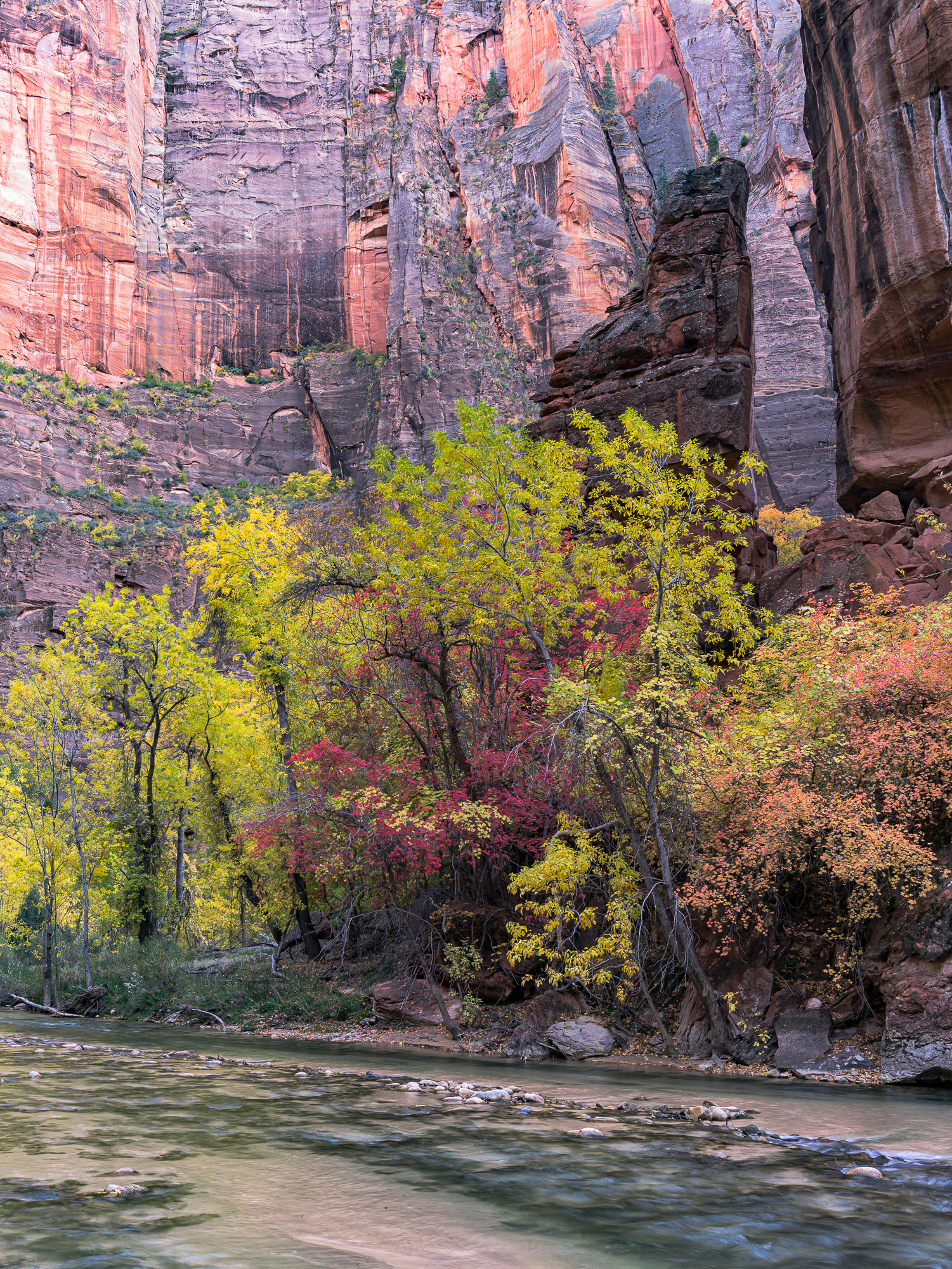
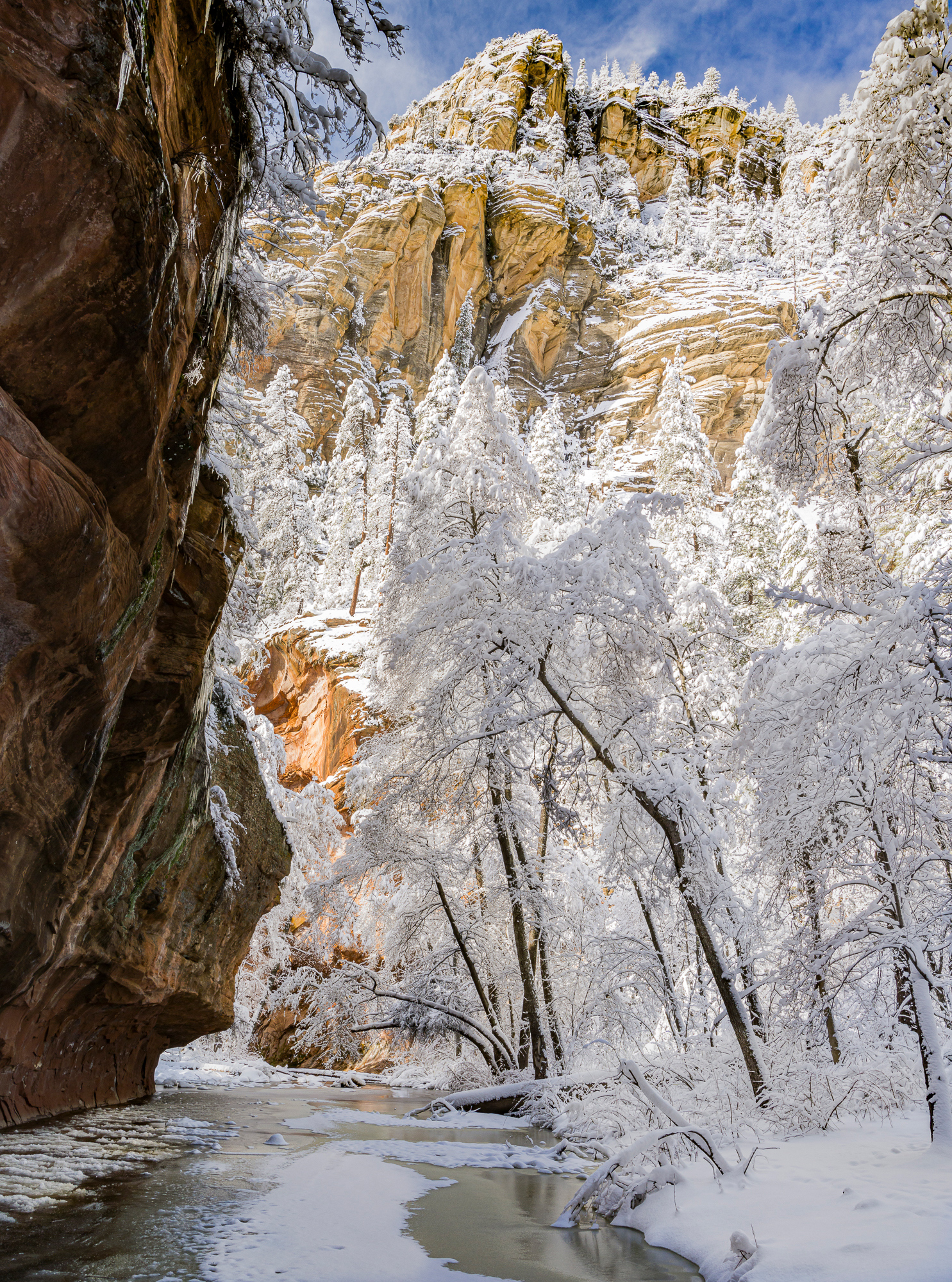
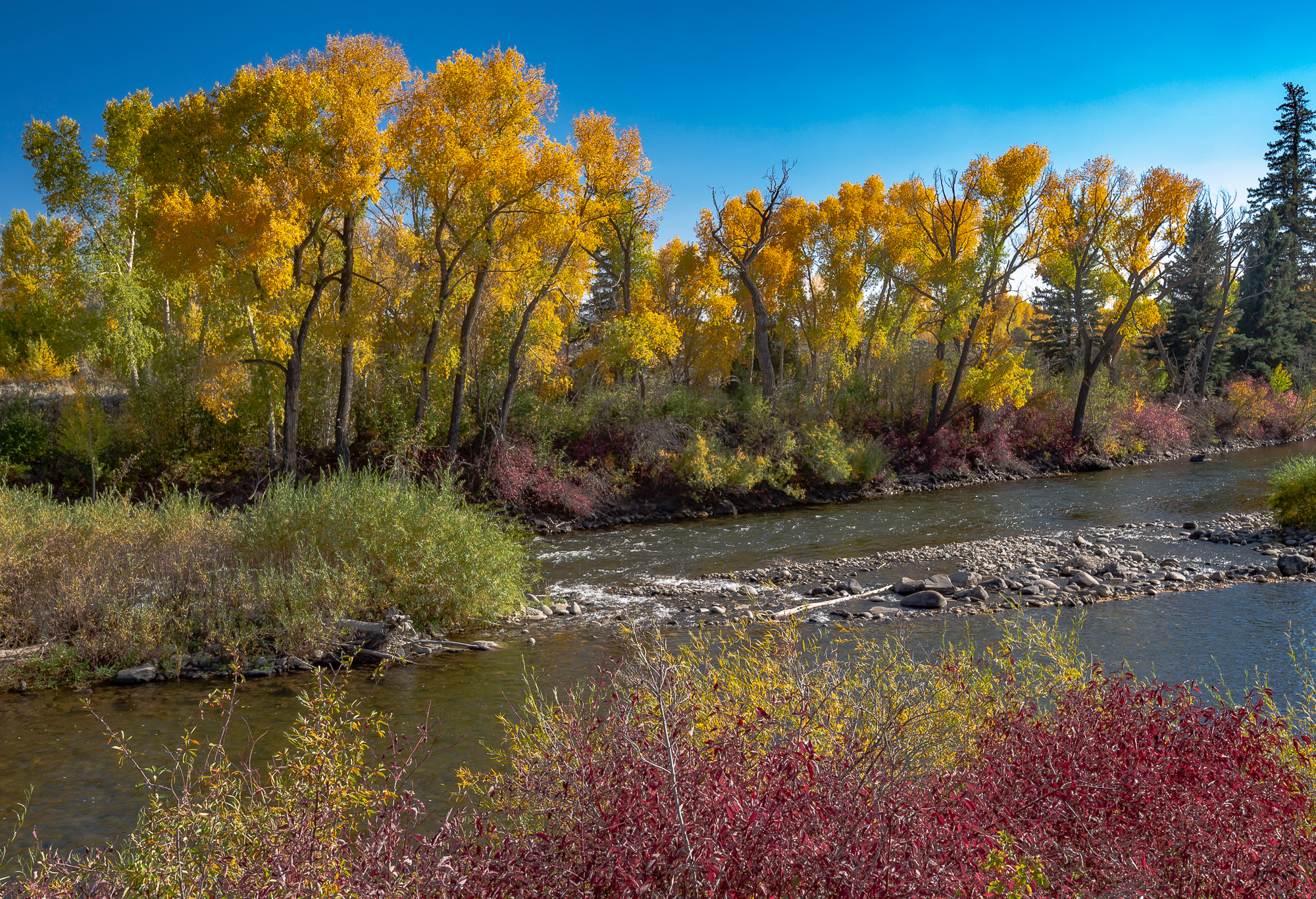
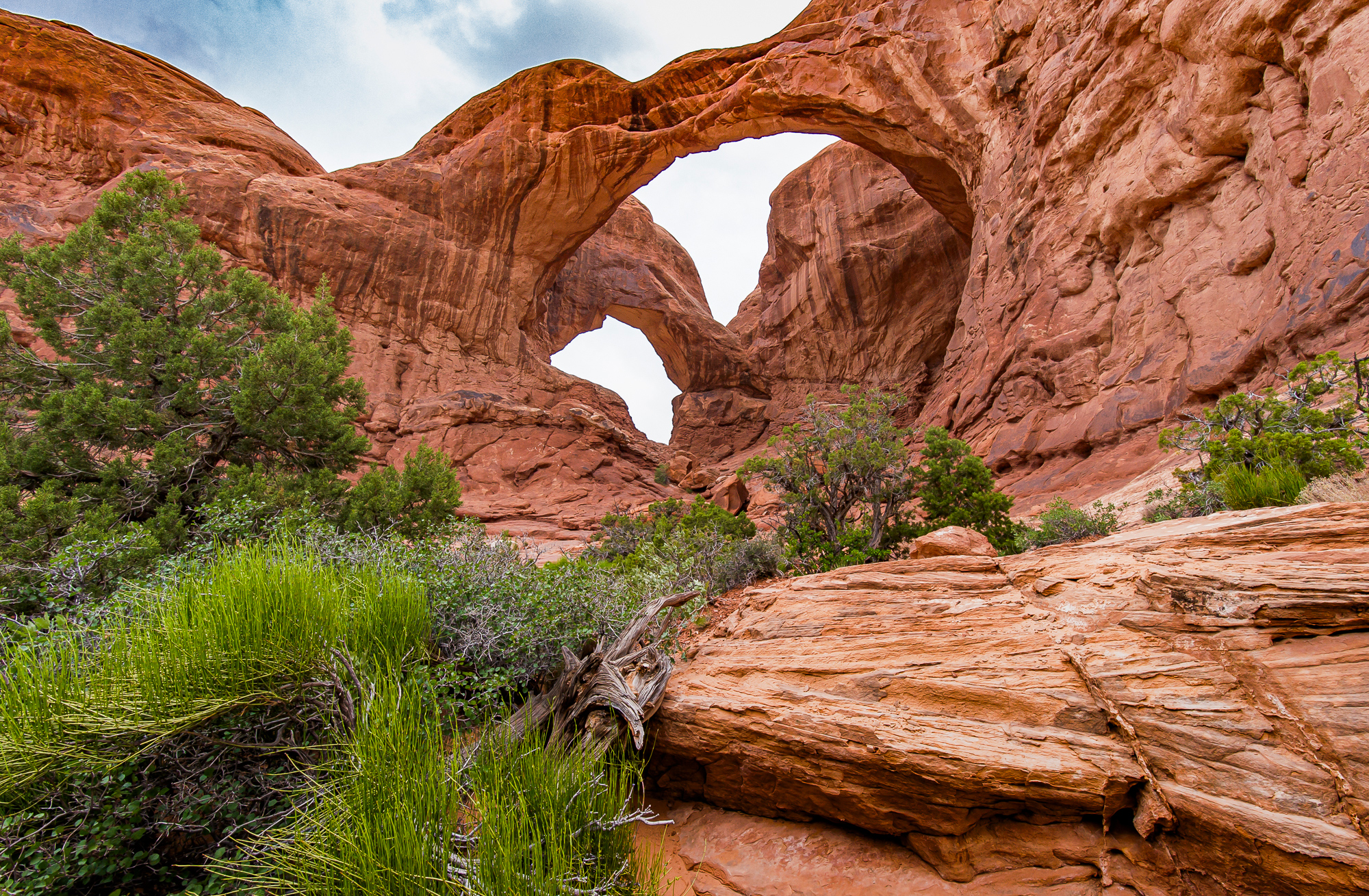
Harvey Stearn
March 2020
Sedona, AZ
To see the scope and essence of Harvey Stearn's photographic art please visit www.CameraStops.com. Mr. Stearn began photographing Western landscapes and wildlife at the age of 13, spent 50 years pursuing his passion in the field and in the darkroom before fully converting to digital photography in 2002. He developed color prints as well as monochrome, but switched over to digital capture and editing in 2002. Though he was a top executive for two large scale land development and home building corporations, he always found time for his fine art photography which won many awards. His work was exhibited in art museums in Southern California and Arizona, and was also featured in billboard advertisements and published in magazines. Mr. Stearn served on the California Arts Council for nine years, including two years as Chairman and another two as Vice Chairman. In addition, he was the founding Chairman of the John Wayne Airport Arts Commission in Orange County, California. Mr. Stearn’s work was sold through Arizona galleries for 15 years. In recent years he wrote 33 illustrated articles for PhotoPXL.com and 14 articles for Luminous-Landscape.com. In 2013 he published a book entitled “In Search of the Old West” which has been widely acclaimed. He was a guest lecturer on photography on a cruise ship visiting Chile, Argentina, Uruguay and the Falkland Islands. His work was among the top 100 images printed in NANPA's Showcase publications in 2019 and 2020. Images have been edited and selected for two new books on Landscape photography which will be published in late 2024 and early 2025.






